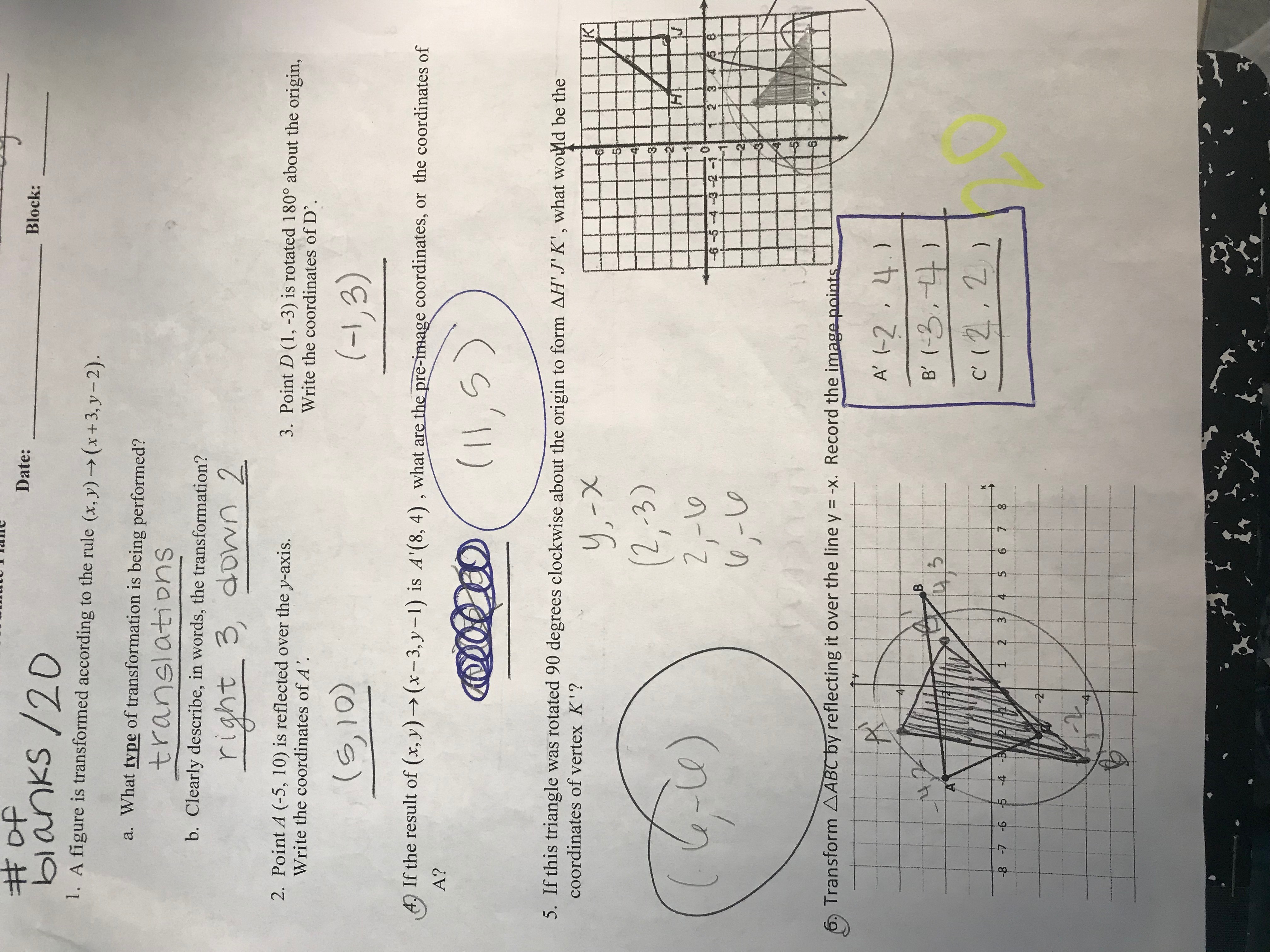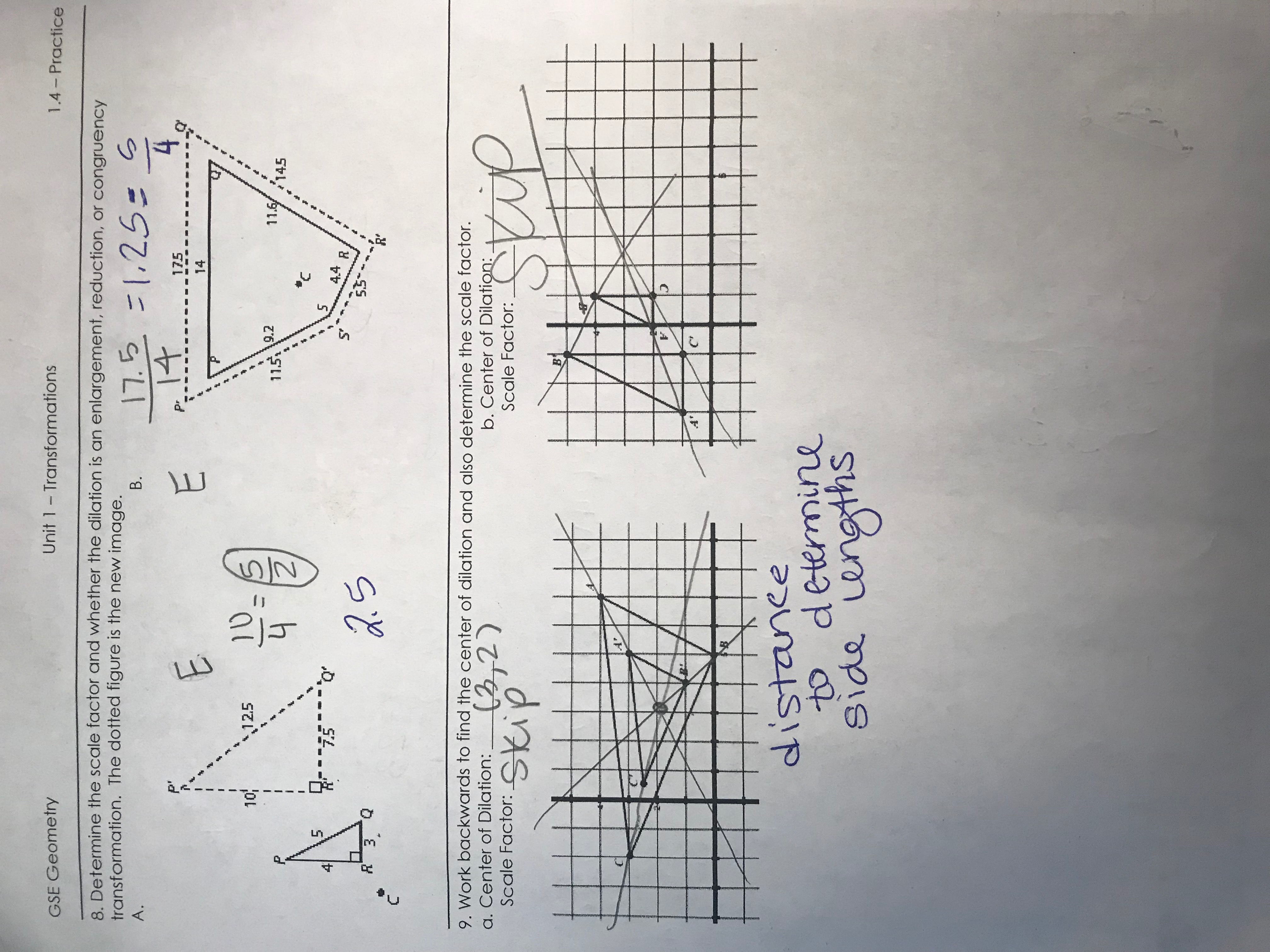Geometry Module 1 focuses on transformations and symmetry. These concepts are fundamental.
Understanding Transformations
Begin with translations. Imagine sliding a shape. No rotation, no reflection, just a shift. Explain the vector notation. Highlight how coordinates change.
Next, tackle reflections. Treat the line of reflection like a mirror. Each point has a corresponding image. Emphasize that the distance to the line is equal on both sides.
Then, introduce rotations. Focus on the center of rotation and the angle of rotation. Use protractors and tracing paper. This helps visualize the movement.
Finally, cover dilations. Shapes either enlarge or shrink. The scale factor is crucial. Ensure students understand the difference between scale factors greater than 1 and less than 1.
Tips for Teaching Transformations
Use real-world examples. Tiling patterns demonstrate translations. Butterflies show symmetry. These are easily relatable.
Incorporate technology. Geometry software allows dynamic manipulation. Students can see transformations in action.
Provide plenty of practice. Worksheets and interactive activities solidify understanding. Repetition is key.
Exploring Symmetry
Define line symmetry. A shape can be folded along a line. Both halves match perfectly. Point out symmetrical objects around the classroom.
Introduce rotational symmetry. A shape can be rotated less than 360 degrees. It looks identical to its original position. The order of rotational symmetry is important.
Consider point symmetry. Every point has a corresponding point equidistant from the center. This can be harder for students to grasp.
Tips for Teaching Symmetry
Use paper folding activities. Students create symmetrical designs. This is a hands-on approach.
Show examples of symmetry in art and architecture. Explore tessellations created by M.C. Escher.
Relate symmetry to transformations. Reflection creates line symmetry. Rotation creates rotational symmetry.
Common Misconceptions
Students may confuse reflections and rotations. Emphasize the line of reflection versus the center of rotation.
Some struggle with the concept of a negative scale factor in dilations. Explain that it involves a reflection as well as a scaling.
Students may not realize that a shape can have both line and rotational symmetry. Explore examples like squares and circles.
They might think transformations change the size of a shape, forgetting that isometries (translations, rotations, reflections) preserve size and shape.
Failing to accurately identify the center of rotation is common. Practice finding the correct center.
Making it Engaging
Use games and puzzles. These make learning fun and interactive. Explore online resources with interactive transformation games.
Incorporate art projects. Students create symmetrical artwork. This fosters creativity and understanding.
Use manipulatives. Mirrors and tracing paper help visualize transformations. Hands-on learning is beneficial.
Real-world scavenger hunt. Have students find examples of transformations and symmetry in their environment. Document their findings.
Coding activities. Use block-based coding platforms to create geometric designs using transformations. This introduces computational thinking.
Addressing the Answer Key
Use the answer key as a teaching tool. Not just for grading. Discuss the solutions in detail.
Analyze common errors. Identify areas where students struggle. Adapt your teaching accordingly.
Encourage students to explain their reasoning. Understanding the process is more important than just getting the correct answer.
Go beyond simply providing the answer. Show alternative methods for solving the problems.
Use the answer key to create extension activities. Challenge advanced students with more complex problems.
Review related concepts. Reinforce prior knowledge. Build a strong foundation.
Promote self-assessment. Have students check their own work. Encourage them to learn from their mistakes.
Consider group work. Encourage peer teaching and collaborative problem-solving. This can help students learn from each other.
Differentiate instruction. Provide different levels of support. Ensure all students can succeed.
Communicate with parents. Keep them informed of their child's progress. Offer suggestions for support at home.
Remember that teaching transformations and symmetry effectively requires patience and creativity. Focus on conceptual understanding. Provide ample opportunities for practice. Foster a positive learning environment.


